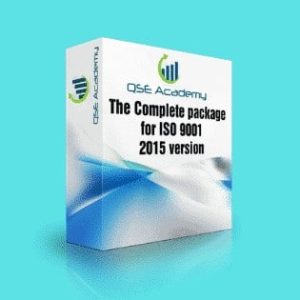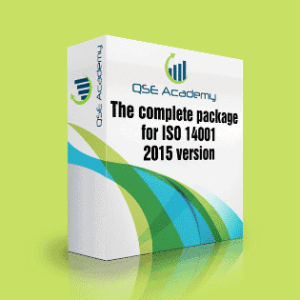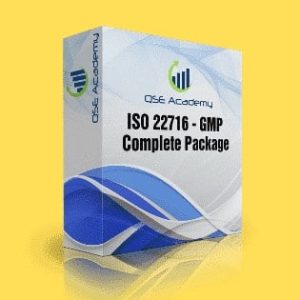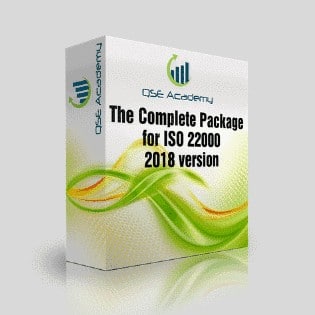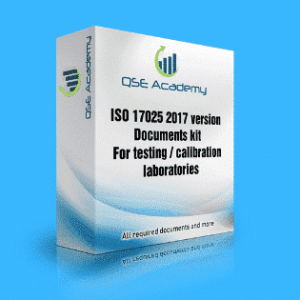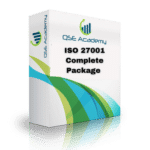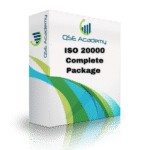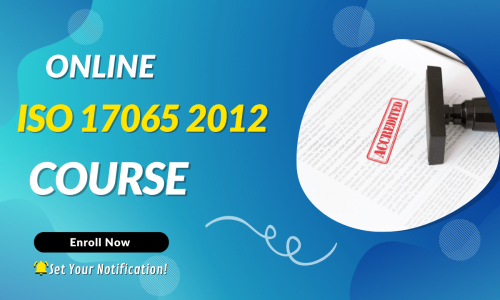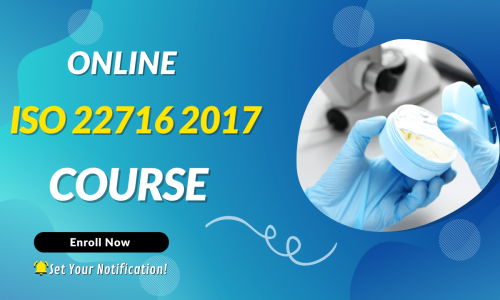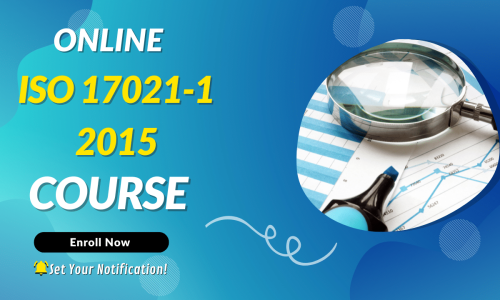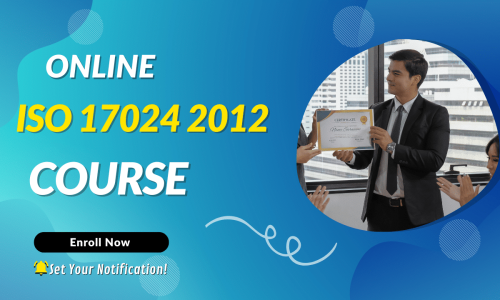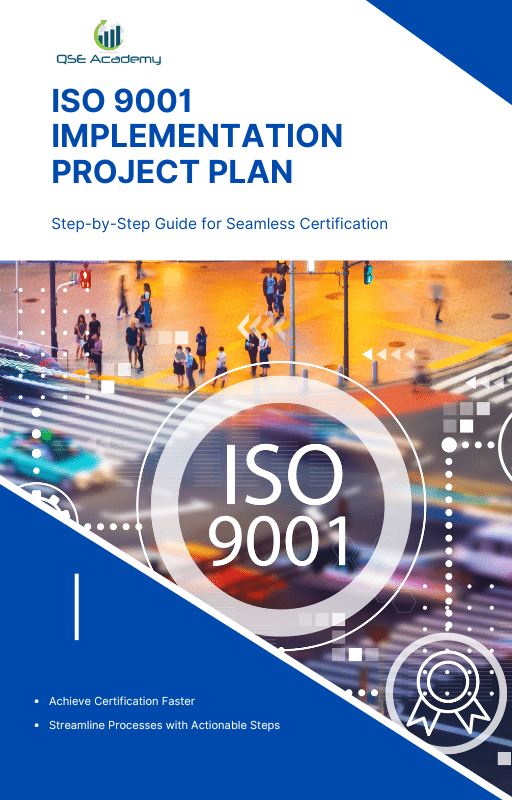How many requirements are in iso 9001?
How many requirements are in iso 9001?
Have you ever wondered how many requirements are in ISO 9001? It’s a question that comes up often, especially for businesses exploring this popular quality management standard. Understanding the requirements in ISO 9001 is key to successfully implementing the standard and earning certification. But here’s the thing—it’s not as simple as pulling up a numbered list of requirements.
ISO 9001:2015 is structured across 10 sections, or clauses, each containing multiple requirements that guide organizations in creating a robust and effective quality management system (QMS). While these requirements cover a wide range of topics—like leadership, planning, operations, and improvement—they’re designed to work together to help businesses operate more efficiently and consistently.
In this article, we’ll dive into how many requirements are in ISO 9001, where to find them, and why understanding these requirements is essential for success. Whether you’re new to ISO 9001 or just looking to brush up on the details, this guide will help you navigate the standard with confidence. Let’s get started!
Understanding ISO 9001 Requirements
Before diving into how many requirements are in ISO 9001, let’s take a moment to define what “requirements” actually mean in this context. In ISO 9001, requirements are the specific guidelines and actionable points that organizations need to meet in order to create an effective quality management system (QMS). Think of them as the building blocks that help businesses achieve consistency, customer satisfaction, and continuous improvement.
These requirements are not arbitrary—they’re carefully designed to address the essential aspects of running a successful business. From understanding your organization’s context to improving processes over time, each requirement plays a role in ensuring quality at every level.
How Are the Requirements Structured in ISO 9001?
When exploring how many requirements are in ISO 9001, it’s important to understand that the standard is divided into 10 sections, or clauses. However, not all sections contain actionable requirements.
The first three sections—Scope, Normative References, and Terms and Definitions—set the stage and provide background information. The real work begins in Sections 4 through 10, which outline the core requirements for building and maintaining your QMS.
For example:
- Section 4 (Context of the Organization) focuses on understanding internal and external factors that affect your business.
- Section 5 (Leadership) emphasizes the importance of management commitment and establishing a quality policy.
- Section 6 (Planning) dives into setting objectives and identifying risks and opportunities.
These requirements are interconnected, creating a comprehensive framework that guides organizations through every stage of quality management.
Why Understanding the Requirements Matters
Knowing how many requirements are in ISO 9001 and what they cover is crucial for businesses aiming to implement the standard. By breaking down the requirements section by section, you can:
- Identify gaps in your current processes.
- Focus your efforts on areas that need the most attention.
- Ensure you’re fully prepared for certification audits.
Understanding the structure of ISO 9001 not only simplifies the implementation process but also ensures that your QMS is practical, effective, and tailored to your organization’s needs.
So, while there’s no single numbered list of how many requirements are in ISO 9001, understanding their structure and purpose is the first step toward mastering the standard. Let’s keep exploring how these requirements come together to create a blueprint for success!
How Many Requirements Are in ISO 9001?
Now, let’s tackle the big question: how many requirements are in ISO 9001? The answer isn’t a straightforward number you can count on your fingers, but rather a collection of actionable points spread across the standard’s 10 sections. These requirements guide organizations in creating a quality management system (QMS) that not only meets international standards but also supports continuous improvement.
The majority of ISO 9001’s requirements are found in Sections 4 through 10, where the core elements of a QMS are outlined. While it’s hard to pin down an exact number—since some clauses include multiple requirements—the real focus is on understanding what these requirements are and how they work together to help your business succeed. Let’s break it down!
Key Sections with ISO 9001 Requirements
Here’s a quick overview of where most of the actionable requirements in ISO 9001 are located:
- Clause 4: Context of the Organization
- This section has several requirements related to understanding your organization’s internal and external environment. It asks you to identify stakeholders and determine how your business goals align with the QMS.
- Clause 5: Leadership
- Leadership plays a critical role in ISO 9001, and this section includes requirements for top management’s involvement. For instance, it calls for clear communication of the quality policy and ensuring employees understand their roles in maintaining quality.
- Clause 6: Planning
- Planning is all about being proactive. Requirements here include setting quality objectives, identifying risks and opportunities, and planning actions to address them.
- Clause 7: Support
- This section outlines requirements for ensuring your team has the tools, training, and resources needed to succeed. It covers communication, competence, and even how you manage documented information.
- Clause 8: Operation
- The operation section is one of the most detailed, with requirements on how to manage customer requirements, operational controls, and the delivery of products or services. This is where the day-to-day activities of your business come into play.
- Clause 9: Performance Evaluation
- Requirements here guide you on monitoring and evaluating the performance of your QMS. This includes internal audits, customer feedback, and regular management reviews.
- Clause 10: Improvement
- The final section focuses on continuous improvement. Requirements include taking corrective actions and finding ways to enhance your processes over time.
So, How Many Requirements Are There, Really?
If you’re looking for an exact count, it can vary depending on how you interpret the clauses and sub-clauses. However, the takeaway is this: ISO 9001 is comprehensive, with dozens of requirements that cover every aspect of quality management. The beauty of this structure is that it provides flexibility, allowing businesses to adapt the requirements to their unique needs.
Why Knowing the Requirements Matters
Understanding how many requirements are in ISO 9001 and where they’re located helps you approach the standard with clarity. It’s not about memorizing every clause—it’s about knowing how the requirements fit together to build a strong QMS.
Once you see the big picture, implementing ISO 9001 becomes less about compliance and more about creating a system that genuinely improves your operations and customer satisfaction. So, while you might not be able to count all the requirements on one hand, you’ll know exactly where to focus your efforts. Let’s keep going and explore why these requirements are so important for your business!
Why Knowing the Requirements in ISO 9001 Matters
Understanding how many requirements are in ISO 9001 isn’t just about ticking off boxes—it’s about knowing what those requirements mean for your business and how they help you achieve success. While the exact number of requirements might vary depending on how you interpret the clauses, what really matters is understanding why they’re there and how they work together to build a strong quality management system (QMS).
Let’s dive into why knowing the requirements in ISO 9001 is essential for your organization.
1. It Helps You Prepare for Certification
When your goal is to achieve ISO 9001 certification, understanding how many requirements are in ISO 9001 and where they’re located gives you a clear roadmap. Certification isn’t something you can wing—it requires careful planning and implementation.
Knowing the requirements helps you:
- Identify what’s already in place within your business.
- Spot gaps in your processes.
- Develop a solid plan to meet the standard.
For example, if your business excels in operational control (Clause 8) but lacks a formal system for performance evaluation (Clause 9), you’ll know exactly where to focus your efforts.
2. It Builds a More Effective Quality Management System
ISO 9001 requirements aren’t just there for certification—they’re designed to help your business run more smoothly. When you follow the requirements, you’re building a QMS that improves efficiency, minimizes risks, and boosts customer satisfaction.
For instance:
- The requirements in Clause 6 (Planning) ensure you’re proactively addressing risks and opportunities.
- Clause 7 (Support) ensures your team has the resources and training they need to succeed.
By understanding how many requirements are in ISO 9001 and what they cover, you can create a system that isn’t just compliant but also practical and effective for your business.
3. It Promotes a Culture of Quality
One of the key benefits of meeting ISO 9001 requirements is fostering a culture of quality throughout your organization. When leadership (Clause 5) takes ownership of the QMS and employees understand their roles (Clause 7), quality becomes a shared responsibility rather than just a checklist.
Knowing the requirements helps you communicate clearly with your team, showing them how their contributions align with the company’s quality goals. This builds trust, engagement, and a commitment to continuous improvement.
4. It Ensures Long-Term Success
ISO 9001 is built around the concept of continuous improvement. The requirements in Clause 10 (Improvement) encourage you to regularly evaluate your processes, identify areas for growth, and make adjustments to stay competitive.
By understanding how many requirements are in ISO 9001 and how they support improvement, you’re not just meeting today’s standards—you’re setting your business up for long-term success.
5. It Simplifies the Certification Process
Let’s face it—getting certified can feel daunting, especially if you’re not familiar with the requirements. But when you know how many requirements are in ISO 9001 and how they fit into the overall structure, the process becomes much more manageable.
You’ll be able to confidently explain your QMS to auditors, address any gaps, and demonstrate how your business meets the standard. And with that clarity, certification becomes less of a hurdle and more of an opportunity to shine.
The Bottom Line
Understanding how many requirements are in ISO 9001 and why they matter is key to building a strong, effective QMS. These requirements aren’t just rules—they’re tools to help your business thrive. Whether you’re preparing for certification, improving processes, or fostering a culture of quality, the requirements in ISO 9001 provide a framework for success.
So, the next time someone asks, “Why bother with all these requirements?” you’ll have a simple answer: because they work! With the right mindset and a clear plan, you’ll not only meet the requirements but also unlock new opportunities for growth and improvement. Let’s keep going and explore how you can put these requirements into action!
Tips for Meeting ISO 9001 Requirements
Now that we’ve covered how many requirements are in ISO 9001 and why they matter, let’s talk about how to meet them. The requirements in ISO 9001 might seem like a lot to handle, but with the right approach, you can tackle them efficiently and effectively. Here are some practical tips to help you navigate the process with confidence.
1. Break It Down, Section by Section
The key to handling how many requirements are in ISO 9001 is to break them down into manageable pieces. Instead of trying to address all the requirements at once, focus on one section at a time.
For example, start with Clause 4 (Context of the Organization). Make sure you’ve clearly defined your internal and external factors, then move on to Clause 5 (Leadership) and focus on establishing a strong quality policy. By working step by step, you’ll avoid feeling overwhelmed.
2. Use Checklists and Templates
There’s no need to reinvent the wheel when it comes to meeting ISO 9001 requirements. Many organizations offer templates, guides, and checklists that align with the standard’s structure.
For example:
- A checklist for Clause 7 (Support) can help you track employee training, communication processes, and resource allocation.
- Templates for Clause 6 (Planning) can guide you in setting quality objectives and identifying risks.
These tools can save time and ensure you’re addressing every requirement effectively.
3. Conduct a Gap Analysis
A gap analysis is one of the best ways to figure out where you stand in relation to ISO 9001 requirements. It helps you identify which requirements you’re already meeting and which ones need more attention.
For instance, you might find that your processes for Clause 8 (Operation) are solid but need to improve how you monitor and measure performance in Clause 9 (Performance Evaluation). A gap analysis provides clarity, so you can focus your efforts where they’re needed most.
4. Involve Your Team
Meeting the requirements in ISO 9001 isn’t a one-person job—it’s a team effort. Engage your employees early in the process by explaining the standard, their role in the QMS, and how it benefits the organization.
For example, employees in production might contribute insights for Clause 8 (Operation), while HR can help with Clause 7 (Support) by focusing on training and competence. Involving your team ensures everyone is on the same page and committed to meeting the requirements.
5. Keep Documentation Organized
ISO 9001 places a strong emphasis on documented information. Whether it’s policies, procedures, or performance data, keeping everything organized is crucial.
Create a centralized system—digital or physical—where all ISO 9001-related documents are stored. This will make it easier to demonstrate compliance during audits and ensure that no requirement is overlooked.
6. Consider Working with a Consultant
If you’re new to ISO 9001 or find the requirements overwhelming, consider hiring an experienced ISO consultant. They can guide you through the process, provide tailored advice, and help you navigate how many requirements are in ISO 9001 with ease.
A consultant can also help you avoid common pitfalls and ensure that your QMS is both compliant and practical for your organization.
7. Focus on Continuous Improvement
Meeting the requirements isn’t just a one-time effort—it’s an ongoing process. Clause 10 (Improvement) encourages you to regularly review and refine your QMS to ensure it stays effective and aligned with your business goals.
Set up regular internal audits and use feedback from employees and customers to identify areas for improvement. This approach not only helps you maintain compliance but also drives growth and innovation.
Final Thoughts
Meeting how many requirements are in ISO 9001 might seem like a big task, but with the right strategies, it’s completely achievable. By breaking the process into manageable steps, using tools and templates, and involving your team, you’ll be well on your way to building a QMS that works for your business.
Remember, ISO 9001 isn’t just about meeting requirements—it’s about creating a system that supports quality, efficiency, and continuous improvement. With these tips in mind, you’re ready to tackle the requirements head-on and take your business to the next level. You’ve got this!
Common Misconceptions About How Many Requirements Are in ISO 9001
When people first hear about ISO 9001, it’s easy to get overwhelmed by the thought of its requirements. Questions like how many requirements are in ISO 9001 and whether they’re manageable often lead to misconceptions that can discourage businesses from diving in. Let’s clear up some of these myths and set the record straight.
1. “ISO 9001 Has a Fixed, Countable Number of Requirements”
A common misconception is that ISO 9001 contains a specific number of requirements that can be ticked off like a checklist. While it’s true that the standard is structured into 10 sections, the requirements are spread across multiple clauses and sub-clauses, making them more nuanced.
Instead of focusing on an exact number, it’s more helpful to understand that the requirements in ISO 9001 are designed to work together as a framework. Each section contributes to building a strong quality management system (QMS), so it’s less about counting and more about implementing what’s relevant to your business.
2. “Small Businesses Don’t Need to Meet All the Requirements”
Many small businesses believe that ISO 9001 is only for large corporations and that they can skip some requirements because of their size. However, the standard applies to organizations of all sizes, and how many requirements are in ISO 9001 doesn’t change based on the number of employees or the scale of operations.
The good news? ISO 9001 is flexible. Small businesses can tailor their approach to meet the requirements in a way that makes sense for them. For example, a smaller company might have simpler documentation or fewer layers of leadership (Clause 5), but the principles of the requirements still apply.
3. “ISO 9001 Is Just About Documentation”
Another myth is that ISO 9001 is mainly about filling out forms and creating documents. While documentation is an important part of the process (especially in Clause 7, which covers “Support”), the requirements go far beyond paperwork.
ISO 9001 is about creating systems that improve how your business operates. Whether it’s identifying risks (Clause 6), ensuring effective operations (Clause 8), or driving continuous improvement (Clause 10), the requirements are designed to enhance your organization, not bury it in paperwork.
4. “You Have to Be Perfect to Meet the Requirements”
Some businesses think they need to have flawless processes before starting with ISO 9001. The truth is, the requirements are there to help you improve—not to expect perfection from the start.
For example, Clause 9 (Performance Evaluation) guides you on monitoring and measuring your processes. This helps you identify gaps and areas for improvement over time. Knowing how many requirements are in ISO 9001 and understanding their purpose allows you to approach the standard as a journey rather than a one-time goal.
5. “The Requirements Are Too Rigid and Can’t Be Adapted”
One of the biggest misconceptions is that ISO 9001 is rigid and doesn’t leave room for flexibility. In reality, the requirements are intentionally broad to accommodate a wide range of industries and business models.
For example, the requirements in Clause 4 (Context of the Organization) encourage you to consider your unique internal and external factors. This means you can apply ISO 9001 in a way that fits your specific goals, whether you’re in manufacturing, retail, healthcare, or a completely different field.
The Truth About ISO 9001 Requirements
When it comes to how many requirements are in ISO 9001, it’s not about counting every detail—it’s about understanding the purpose behind them. The requirements are designed to guide you in building a quality management system that’s practical, effective, and tailored to your business.
Don’t let misconceptions hold you back. Whether you’re a small startup or a large organization, ISO 9001 can work for you. By approaching the requirements with an open mind and a willingness to improve, you’ll see that they’re not obstacles—they’re tools for success. Let’s continue exploring how these requirements can help your business thrive!
The Bigger Picture: Why ISO 9001 Requirements Matter
We’ve explored how many requirements are in ISO 9001, but the real question is—why do these requirements matter? What’s the bigger picture here? While it might seem like the standard is just a collection of rules, the truth is that ISO 9001 is designed to make your business stronger, more efficient, and better prepared for the future.
Let’s take a step back and look at the broader benefits of ISO 9001 requirements and how they can transform the way you work.
1. They Build a Solid Foundation for Quality
The requirements in ISO 9001 create a roadmap for establishing and maintaining a quality management system (QMS). By addressing key areas like leadership (Clause 5), planning (Clause 6), and operations (Clause 8), the standard helps you build a foundation that supports consistent quality in everything you do.
This foundation isn’t just about meeting the standard—it’s about delivering better products and services, which leads to happier customers and long-term success.
2. They Drive Continuous Improvement
One of the most valuable aspects of ISO 9001 is its focus on continuous improvement (Clause 10). The requirements encourage you to regularly evaluate your processes, gather feedback, and make adjustments to stay ahead in a competitive market.
Knowing how many requirements are in ISO 9001 and understanding how they connect to improvement helps you see the standard as a tool for growth, not just a certification. It’s about creating a culture where improvement is a constant, ongoing effort.
3. They Promote Efficiency and Risk Management
Meeting ISO 9001 requirements isn’t just about quality—it’s also about efficiency. For example:
- Clause 6 (Planning) helps you identify risks and opportunities, so you can proactively address potential issues before they become problems.
- Clause 7 (Support) ensures you have the resources, training, and tools needed to operate smoothly.
By following these requirements, you’ll streamline your processes, reduce waste, and minimize disruptions, all of which save time and money in the long run.
4. They Enhance Customer Satisfaction
At the heart of ISO 9001 is the goal of meeting customer needs. The requirements, especially those in Clause 8 (Operation), focus on understanding customer requirements, delivering consistent results, and exceeding expectations.
When you implement these requirements, you’re not just improving internal processes—you’re also creating a better experience for your customers. And as we all know, satisfied customers are the foundation of any successful business.
5. They Prepare You for Growth
Understanding how many requirements are in ISO 9001 and meeting them isn’t just about where your business is today—it’s about where you’re going. The standard helps you put systems in place that can scale as your organization grows.
Whether you’re expanding into new markets, launching new products, or simply aiming to improve your existing operations, ISO 9001 gives you the framework to grow confidently and sustainably.
ISO 9001: More Than a Checklist
It’s easy to think of ISO 9001 requirements as just a list of things to do for certification, but they’re so much more than that. They’re a blueprint for running your business better, ensuring quality, and achieving long-term success.
By understanding how many requirements are in ISO 9001 and why they matter, you can see the standard for what it truly is—a powerful tool for transformation. Whether you’re just starting your ISO 9001 journey or looking to refine your processes, embracing the requirements will set you up for success at every stage.
So, the next time you think about ISO 9001, remember—it’s not just about meeting requirements; it’s about building a better, more resilient business. And that’s a goal worth striving for!
Conclusion: How Many Requirements Are in ISO 9001?
So, how many requirements are in ISO 9001? While there isn’t a single number to pin down due to the nuanced and interconnected nature of the standard, the actionable requirements are spread across Clauses 4 through 10. These clauses form the backbone of ISO 9001, guiding organizations in everything from leadership and planning to operations and continuous improvement.
What’s important to remember is that these requirements are more than just a checklist—they’re a framework designed to help businesses improve efficiency, meet customer expectations, and foster long-term success. By understanding the requirements and how they work together, you can confidently navigate the standard and build a quality management system (QMS) that truly works for your organization.
Whether you’re just starting out or already familiar with ISO 9001, knowing how many requirements are in ISO 9001 gives you the clarity and direction you need to succeed. So, take it one step at a time, involve your team, and remember that the effort you put into meeting these requirements will pay off in improved operations, happier customers, and a stronger business overall.
In the end, ISO 9001 isn’t just about certification—it’s about building something better. And now that you know how to approach the requirements, you’re well on your way to achieving that goal! You’ve got this!
Looking for More Resources on ISO 9001?
Looking for ISO 9001 Resources Tailored to Your Industry?
If this article helped clarify ISO 9001, take the next step with our industry-focused tools designed to simplify your certification journey:
📦 ISO 9001 Documentation Kits by Industry: Whether you’re in manufacturing, construction, consulting, or healthcare — we have complete, ready-to-use documentation tailored for your sector.
🎓 Online ISO 9001 Training: Learn how to implement ISO 9001 effectively with our easy-to-follow video lessons, real-world examples, and practical exercises.
📋 ISO 9001 Checklist: Download our step-by-step checklist to ensure your QMS meets all the 9001:2015 requirements from start to finish.
These resources are crafted to save you time, reduce stress, and help you achieve certification with confidence. Choose your industry and start now!

make ISO standards less intimidating and more approachable for everyone.
Whether it’s ISO 9001, ISO 22000, or the cosmetics-focused ISO 22716,
I’ve spent my career turning complex jargon into clear, actionable steps
that businesses can actually use. I’m not here to call myself an expert—I prefer “enthusiast” because I truly love what I do.
There’s something incredibly rewarding about helping people navigate food safety and quality management systems
in a way that feels simple, practical, and even enjoyable.
When I’m not writing about standards, you’ll probably find me playing Piano 🎹, connecting with people, or diving into my next big project💫.
- I’m an engineer specialized in the food and agricultural industry
- I have a Master’s in QHSE management and over 12 years of experience as a Quality Manager
- I’ve helped more than 15 companies implement ISO 9001, ISO 22000, ISO 22716, GMP, and other standards
- My clients include food producers, cosmetics manufacturers, laboratories, and service companies
- I believe quality systems should be simple, useful, and efficient
- Outside of work, I play piano and love learning something new every day
Let’s make ISO less about stress and more about success! 🙏







